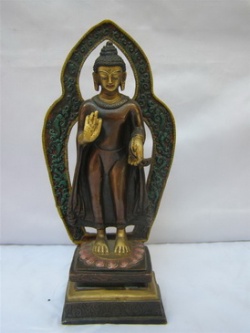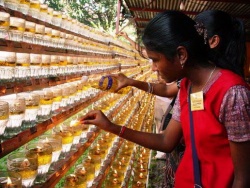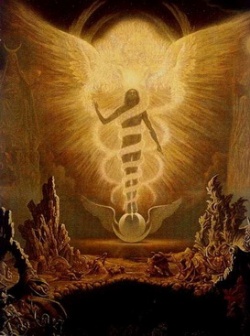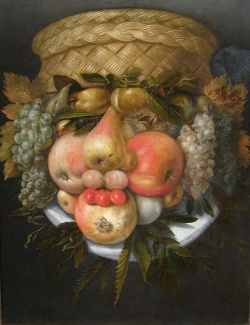Difference between revisions of "Air"
(Created page with "thumb|250px| <poem> Air is often seen as a universal power or pure substance. Its supposed fundamental importance to life can be seen in wor...") |
|||
| (16 intermediate revisions by 3 users not shown) | |||
| Line 1: | Line 1: | ||
[[File:6828.jpg|thumb|250px|]] | [[File:6828.jpg|thumb|250px|]] | ||
| − | |||
| − | |||
| − | |||
| − | [[Air]] is one of the four classical [[elements]] in {{Wiki|ancient Greek}} [[philosophy]] and [[science]]. According to {{Wiki|Plato}}, it is associated with the octahedron; [[air]] is considered to be both hot and wet. The ancient Greeks used two words for air: aer meant the dim lower {{Wiki|atmosphere}}, and [[aether]] meant the bright upper {{Wiki|atmosphere}} above the clouds. {{Wiki|Plato}}, for instance writes that "So it is with air: there is the brightest variety which we call [[aether]], the muddiest which we call mist and darkness, and other kinds for which we have no name...." Among the early {{Wiki|Greek}} Pre-Socratic [[philosophers]], Anaximenes (mid-6th century BCE) named [[air]] as the arche. A similar [[belief]] was attributed by some ancient sources to Diogenes Apolloniates (late 5th century BCE), who also linked [[air]] with {{Wiki|intelligence}} and [[soul]] ([[Wikipedia:Psyche (psychology)|psyche]]), but other sources claim that his arche was a substance between [[air]] and [[fire]]. Aristophanes parodied such teachings in his play The Clouds by putting a [[prayer]] to [[air]] in the mouth of {{Wiki|Socrates}}. | + | |
| + | |||
| + | |||
| + | [[Air]] is often seen as a [[universal]] [[power]] or [[pure]] [[substance]]. Its supposed fundamental importance to [[life]] can be seen in words such as aspire, inspire, perspire and [[spirit]], all derived from the {{Wiki|Latin}} spirare. | ||
| + | |||
| + | {{Wiki|Greek}} and {{Wiki|Roman}} [[tradition]] | ||
| + | |||
| + | [[Air]] is one of the four classical [[elements]] in {{Wiki|ancient Greek}} [[philosophy]] and [[science]]. According to {{Wiki|Plato}}, it is associated with the [[octahedron]]; [[air]] is considered to be both [[hot]] and wet. The {{Wiki|ancient Greeks}} used two words for [[air]]: aer meant the dim lower {{Wiki|atmosphere}}, and [[aether]] meant the bright upper {{Wiki|atmosphere}} above the clouds. {{Wiki|Plato}}, for instance writes that "So it is with [[air]]: there is the brightest variety which we call [[aether]], the muddiest which we call mist and {{Wiki|darkness}}, and other kinds for which we have no [[name]]...." Among the early {{Wiki|Greek}} Pre-Socratic [[philosophers]], [[Anaximenes]] (mid-6th century BCE) named [[air]] as the [[arche]]. A similar [[belief]] was attributed by some {{Wiki|ancient}} sources to [[Diogenes Apolloniates]] (late 5th century BCE), who also linked [[air]] with {{Wiki|intelligence}} and [[soul]] ([[Wikipedia:Psyche (psychology)|psyche]]), but other sources claim that his [[arche]] was a [[substance]] between [[air]] and [[fire]]. [[Aristophanes]] parodied such teachings in his play The Clouds by putting a [[prayer]] to [[air]] in the {{Wiki|mouth}} of {{Wiki|Socrates}}. | ||
[[File:760ab1 o.jpg|thumb|250px|]] | [[File:760ab1 o.jpg|thumb|250px|]] | ||
| − | [[Air]] was one of many archai proposed by the Pre-socratics, most of whom tried to reduce all things to a single substance. However, Empedocles of Acragas (c. 495-c. 435 BCE) selected four archai for his four [[roots]]: Air, [[fire]], water, and [[earth]]. Ancient and modern opinions differ as to whether he identified [[air]] by the divine name Hera, Aidoneus or even Zeus. | + | [[Air]] was one of many archai proposed by the Pre-socratics, most of whom tried to reduce all things to a single [[substance]]. However, {{Wiki|Empedocles}} of {{Wiki|Acragas}} (c. 495-c. 435 BCE) selected four archai for his four [[roots]]: [[Air]], [[fire]], [[water]], and [[earth]]. {{Wiki|Ancient}} and {{Wiki|modern}} opinions differ as to whether he identified [[air]] by the [[divine]] [[name]] Hera, [[Aidoneus]] or even {{Wiki|Zeus}}. {{Wiki|Empedocles}}’ [[roots]] became the four classical [[elements]] of {{Wiki|Greek}} [[philosophy]]. {{Wiki|Plato}} (427-347 BCE) took over the four [[elements]] of {{Wiki|Empedocles}}. In the [[Timaeus]], his major [[cosmological]] {{Wiki|dialogue}}, the {{Wiki|Platonic}} solid associated with [[air]] is the [[octahedron]] which is formed from eight equilateral triangles. This places [[air]] between [[fire]] and [[water]] which {{Wiki|Plato}} regarded as appropriate because it is [[intermediate]] in its mobility, [[sharpness]], and ability to penetrate. He also said of [[air]] that its minuscule components are so smooth that one can barely [[feel]] them. |
| − | {{Wiki|Plato}}'s student {{Wiki|Aristotle}} (384-322 BCE) developed a different explanation for the [[elements]] based on pairs of qualities. The four [[elements]] were arranged concentrically around the center of the [[universe]] to [[form]] the sublunary [[sphere]]. According to {{Wiki|Aristotle}}, [[air]] is both hot and wet and occupies a place between [[fire]] and water among the elemental spheres. {{Wiki|Aristotle}} definitively separated [[air]] from [[aether]]. For him, [[aether]] was an unchanging, almost divine substance that was found only in the [[heavens]], where it formed celestial spheres. | + | {{Wiki|Plato}}'s [[student]] {{Wiki|Aristotle}} (384-322 BCE) developed a different explanation for the [[elements]] based on pairs of qualities. The four [[elements]] were arranged concentrically around the center of the [[universe]] to [[form]] the sublunary [[sphere]]. According to {{Wiki|Aristotle}}, [[air]] is both [[hot]] and wet and occupies a place between [[fire]] and [[water]] among the [[elemental]] [[spheres]]. {{Wiki|Aristotle}} definitively separated [[air]] from [[aether]]. For him, [[aether]] was an [[unchanging]], almost [[divine]] [[substance]] that was found only in the [[heavens]], where it formed [[celestial]] [[spheres]]. |
| − | In {{Wiki|ancient Greek}} [[medicine]], each of the four | + | In {{Wiki|ancient Greek}} [[medicine]], each of the four [[humors]] became associated with an [[element]]. {{Wiki|Blood}} was the [[humor]] identified with [[air]], since both were [[hot]] and wet. Other things associated with [[air]] and {{Wiki|blood}} in {{Wiki|ancient}} and {{Wiki|medieval}} [[medicine]] included the season of spring, since it increased the qualities of heat and [[moisture]]; the sanguine {{Wiki|temperament}} (of a [[person]] dominated by the {{Wiki|blood}} [[humour]]); {{Wiki|hermaphrodite}} ([[combining]] the {{Wiki|masculine}} [[quality]] of heat with the {{Wiki|feminine}} [[quality]] of [[moisture]]); and the northern point of the {{Wiki|compass}}. |
[[File:5XiC1.jpg|thumb|250px|]] | [[File:5XiC1.jpg|thumb|250px|]] | ||
| − | The alchemical [[symbol]] for [[air]] is an upward-pointing triangle, bisected by a horizontal line. | + | The [[alchemical]] [[symbol]] for [[air]] is an upward-pointing triangle, bisected by a horizontal line. |
[[Indian]] [[tradition]] | [[Indian]] [[tradition]] | ||
| − | In [[Hinduism]], [[Vayu]] ([[Sanskrit]] [[वायु]] ), also known as [[Vāta]] वात, [[Pavana]] [[पवन]] (meaning the [[Purifier]]),or [[Prāna]], is a [[primary]] [[deity]], who is the father of Bhima and the [[spiritual]] father of [[Lord]] {{Wiki|Hanuman}}. As the words for [[air]] (Vāyu) or wind ([[Pavana]]) it is one of the [[Panchamahābhuta]] the "[[five great elements]]" in [[Hinduism]]. The [[Sanskrit]] word '[[Vāta]]' literally means "[[blown]]", '[[Vāyu]]' "[[blower]]", and '[[Prāna]]' "{{Wiki|breathing}}" (viz. the [[breath]] of [[life]], cf. the *an- in 'animate'). | + | In [[Hinduism]], [[Vayu]] ([[Sanskrit]] [[वायु]] ), also known as [[Vāta]] वात, [[Pavana]] [[पवन]] (meaning the [[Purifier]]),or [[Prāna]], is a [[primary]] [[deity]], who is the father of {{Wiki|Bhima}} and the [[spiritual]] father of [[Lord]] {{Wiki|Hanuman}}. As the words for [[air]] ([[Vāyu]]) or [[wind]] ([[Pavana]]) it is one of the [[Panchamahābhuta]] the "[[five great elements]]" in [[Hinduism]]. The [[Sanskrit]] [[word]] '[[Vāta]]' literally means "[[blown]]", '[[Vāyu]]' "[[blower]]", and '[[Prāna]]' "{{Wiki|breathing}}" (viz. the [[breath]] of [[life]], cf. the *an- in 'animate'). |
{{Wiki|Chinese}} [[tradition]] | {{Wiki|Chinese}} [[tradition]] | ||
| − | [[Air]] is not one of the [[traditional]] five {{Wiki|Chinese}} classical [[elements]]. Nevertheless, the ancient {{Wiki|Chinese}} {{Wiki|concept}} of | + | [[Air]] is not one of the [[traditional]] five {{Wiki|Chinese}} classical [[elements]]. Nevertheless, the {{Wiki|ancient}} {{Wiki|Chinese}} {{Wiki|concept}} of Qi or [[chi]] is believed to be close to that of [[air]]. Qi ([[Wikipedia:Mandarin Chinese|Mandarin]] pronunciation: [tɕʰî]; spelled [[qì]] in {{Wiki|Pinyin}} romanization and [[ch'i]] in [[Wade-Giles]]) or [[ki]] (in {{Wiki|Japanese}} romanization), is a fundamental {{Wiki|concept}} of [[traditional]] {{Wiki|Chinese}} {{Wiki|culture}}. Qi is believed to be part of every [[living thing]] that [[exists]], as a kind of "{{Wiki|life force}}" or "[[spiritual]] [[energy]]". It is frequently translated as "[[energy]] flow", or literally as "[[air]]" or "[[breath]]". (For example, "[[tiānqì]]", literally "[[sky breath]]", is the ordinary {{Wiki|Chinese}} [[word]] for "weather"). In [[Wikipedia:Mandarin Chinese|Mandarin]] {{Wiki|Chinese}} it is pronounced something like "chee" in English, but the {{Wiki|tongue}} position is different. The {{Wiki|concept}} of qi is often reified, however no [[scientific]] {{Wiki|evidence}} supports its [[existence]]. |
[[File:508db.jpg|thumb|250px|]] | [[File:508db.jpg|thumb|250px|]] | ||
| − | The [[element]] [[air]] also appears as a {{Wiki|concept}} in the [[Buddhist]] [[religion]] which has an ancient history in [[China]]. | + | The [[element]] [[air]] also appears as a {{Wiki|concept}} in the [[Buddhist]] [[religion]] which has an {{Wiki|ancient}} history in [[China]]. |
| + | |||
| + | Some {{Wiki|Western}} {{Wiki|modern}} [[occultists]] equate the {{Wiki|Chinese}} classical [[element]] of metal with [[air]], others with [[wood]] due to the [[elemental]] association of [[wind]] and [[wood]] in the [[bagua]]. | ||
| − | |||
[[Astrological]] personalities | [[Astrological]] personalities | ||
| − | [[People]] born under the [[astrological]] signs of [[Gemini]], [[Libra]] and [[Aquarius]] are [[thought]] to have dominant [[air]] personalities. [[Air]] personalities tend to be kind, [[intellectual]], communicative and {{Wiki|social}}; however, they can also be [[selfish]], [[superficial]], vicious and very insensitive to other [[people]]'s [[emotions]]. | + | [[People]] born under the [[astrological]] [[signs]] of [[Gemini]], [[Libra]] and [[Aquarius]] are [[thought]] to have dominant [[air]] personalities. [[Air]] personalities tend to be kind, [[intellectual]], communicative and {{Wiki|social}}; however, they can also be [[selfish]], [[superficial]], vicious and very insensitive to other [[people]]'s [[emotions]]. |
| − | Ceremonial magic | + | |
| + | {{Wiki|Ceremonial}} [[magic]] | ||
| − | The Hermetic Order of the Golden Dawn, founded in 1888, incorporates [[air]] and the other {{Wiki|Greek}} classical [[elements]] into its teachings. The [[elemental]] weapon of [[air]] is the dagger which must be painted yellow with magical names and sigils written upon it in violet Each of the [[elements]] has several associated [[spiritual]] [[beings]]. The archangel of [[air]] is Raphael, the angel is Chassan, the ruler is Aral, the king is Paralda, and the [[air]] [[elementals]] (following Paracelsus) are called sylphs. [[Air]] is considerable and it is referred to the upper left point of the pentagram in the Supreme Invoking | + | The {{Wiki|Hermetic Order of the Golden Dawn}}, founded in 1888, incorporates [[air]] and the other {{Wiki|Greek}} classical [[elements]] into its teachings. The [[elemental]] weapon of [[air]] is the [[dagger]] which must be painted [[yellow]] with [[magical]] names and [[sigils]] written upon it in violet Each of the [[elements]] has several associated [[spiritual]] [[beings]]. The {{Wiki|archangel}} of [[air]] is [[Raphael]], the {{Wiki|angel}} is [[Chassan]], the [[ruler]] is [[Aral]], the [[king]] is [[Paralda]], and the [[air]] [[elementals]] (following {{Wiki|Paracelsus}}) are called [[sylphs]]. [[Air]] is considerable and it is referred to the upper left point of the [[pentagram]] in the [http://www.qabalah.dk/superpenta.html Supreme Invoking Ritual of the Pentagram]. Many of these associations have since spread throughout the [[occult]] {{Wiki|community}}. |
[[File:5054AiIs.jpg|thumb|250px|]] | [[File:5054AiIs.jpg|thumb|250px|]] | ||
| − | In the Golden Dawn and many other [[magical]] systems, each [[element]] is associated with one of the [[cardinal points]] and is placed under the care of guardian Watchtowers. The Watchtowers derive from the Enochian system of [[magic]] founded by Dee. In the Golden Dawn, they are represented by the Enochian elemental tablets. [[Air]] is associated with the | + | In the {{Wiki|Golden Dawn}} and many other [[magical]] systems, each [[element]] is associated with one of the [[cardinal points]] and is placed under the [[care]] of guardian Watchtowers. The Watchtowers derive from the {{Wiki|Enochian}} system of [[magic]] founded by Dee. In the {{Wiki|Golden Dawn}}, they are represented by the {{Wiki|Enochian}} [[elemental]] tablets. [[Air]] is associated with the {{Wiki|east}}, which is guarded by the First Watchtower. |
| − | Modern witchcraft | + | {{Wiki|Modern}} {{Wiki|witchcraft}} |
[[Air]] is one of the [[five elements]] that appear in most {{Wiki|Wiccan}} and {{Wiki|Pagan}} [[traditions]]. {{Wiki|Wicca}} in particular was influenced by the {{Wiki|Golden Dawn}} system of [[magic]], and {{Wiki|Aleister Crowley}}'s [[mysticism]]. Common {{Wiki|Wiccan}} attributions include: | [[Air]] is one of the [[five elements]] that appear in most {{Wiki|Wiccan}} and {{Wiki|Pagan}} [[traditions]]. {{Wiki|Wicca}} in particular was influenced by the {{Wiki|Golden Dawn}} system of [[magic]], and {{Wiki|Aleister Crowley}}'s [[mysticism]]. Common {{Wiki|Wiccan}} attributions include: | ||
| − | [[Cardinal direction]]: | + | [[Cardinal direction]]: {{Wiki|East}} |
Season: Spring | Season: Spring | ||
| − | Time of [[life]]: Childhood | + | [[Time]] of [[life]]: Childhood |
| − | Time of day: Sunrise | + | [[Time]] of day: Sunrise |
Regent {{Wiki|Planet}}: {{Wiki|Mercury}} | Regent {{Wiki|Planet}}: {{Wiki|Mercury}} | ||
| − | Elemental [[being]]: Sylph | + | [[Elemental]] [[being]]: Sylph |
| − | Colors: [[Light]] blue, white, bright yellow | + | Colors: [[Light]] blue, white, bright [[yellow]] |
[[Magical]] tools: Sword | [[Magical]] tools: Sword | ||
| − | {{Wiki|Tarot}} reading: Wands or Swords in the Minor Arcana. Swords are [[traditionally]] associated with [[air]] and still are in most tarot decks, however, increasingly decks are [[being]] published with the Wands association. This is still a matter of [[debate]] within the [[esoteric]] and Wiccan community. | + | {{Wiki|Tarot}} reading: Wands or Swords in the {{Wiki|Minor Arcana}}. Swords are [[traditionally]] associated with [[air]] and still are in most {{Wiki|tarot}} decks, however, increasingly decks are [[being]] published with the Wands association. This is still a {{Wiki|matter}} of [[debate]] within the [[esoteric]] and {{Wiki|Wiccan}} {{Wiki|community}}. |
[[Altar]] tool: [[Incense]] | [[Altar]] tool: [[Incense]] | ||
| − | Masculine [[energy]] | + | {{Wiki|Masculine}} [[energy]] |
| − | Other: Correspondences include [[mind]], {{Wiki|intellect}}, study, [[consciousness]] and communications. | + | Other: Correspondences include [[mind]], {{Wiki|intellect}}, study, [[consciousness]] and {{Wiki|communications}}. |
Other [[traditions]] | Other [[traditions]] | ||
| − | Enlil was the [[god]] of [[air]] in ancient Sumer. Shu was the ancient Egyptian [[god]] of [[air]] and the husband of Tefnut, [[goddess]] of moisture. He became an emblem of strength by [[virtue]] of his role in separating Nut from Geb. He played a [[primary]] role in the Coffin Texts, which were spells intended to help the deceased reach the [[realm]] of the [[afterlife]] safely. On the way to the sky, the [[spirit]] had to travel through the [[air]] as one spell indicates: "I have gone up in Shu, I have climbed on the sunbeams." | + | {{Wiki|Enlil}} was the [[god]] of [[air]] in {{Wiki|ancient}} {{Wiki|Sumer}}. [[Shu]] was the {{Wiki|ancient}} [[Egyptian]] [[god]] of [[air]] and the husband of {{Wiki|Tefnut}}, [[goddess]] of [[moisture]]. He became an {{Wiki|emblem}} of strength by [[virtue]] of his role in separating [[Nut]] from [[Geb]]. He played a [[primary]] role in the Coffin Texts, which were {{Wiki|spells}} intended to help the deceased reach the [[realm]] of the [[afterlife]] safely. On the way to the sky, the [[spirit]] had to travel through the [[air]] as one spell indicates: "I have gone up in [[Shu]], I have climbed on the sunbeams." |
| + | |||
| + | In [[East]] {{Wiki|Asia}}, [[air]] is seen as the {{Wiki|equivalent}} of [[wood]]. [[Air]] is represented in the Aztec [[religion]] by a [[snake]] to the {{Wiki|Scythians}}, a [[yoke]] to the [[Hindus]] and for [[Greeks]] as a sword and in {{Wiki|Christian}} {{Wiki|iconography}} as mankind. | ||
| − | |||
| − | |||
{{W}} | {{W}} | ||
[[Category:Five elements]] | [[Category:Five elements]] | ||
Latest revision as of 15:16, 16 December 2016
Air is often seen as a universal power or pure substance. Its supposed fundamental importance to life can be seen in words such as aspire, inspire, perspire and spirit, all derived from the Latin spirare.
Air is one of the four classical elements in ancient Greek philosophy and science. According to Plato, it is associated with the octahedron; air is considered to be both hot and wet. The ancient Greeks used two words for air: aer meant the dim lower atmosphere, and aether meant the bright upper atmosphere above the clouds. Plato, for instance writes that "So it is with air: there is the brightest variety which we call aether, the muddiest which we call mist and darkness, and other kinds for which we have no name...." Among the early Greek Pre-Socratic philosophers, Anaximenes (mid-6th century BCE) named air as the arche. A similar belief was attributed by some ancient sources to Diogenes Apolloniates (late 5th century BCE), who also linked air with intelligence and soul (psyche), but other sources claim that his arche was a substance between air and fire. Aristophanes parodied such teachings in his play The Clouds by putting a prayer to air in the mouth of Socrates.
Air was one of many archai proposed by the Pre-socratics, most of whom tried to reduce all things to a single substance. However, Empedocles of Acragas (c. 495-c. 435 BCE) selected four archai for his four roots: Air, fire, water, and earth. Ancient and modern opinions differ as to whether he identified air by the divine name Hera, Aidoneus or even Zeus. Empedocles’ roots became the four classical elements of Greek philosophy. Plato (427-347 BCE) took over the four elements of Empedocles. In the Timaeus, his major cosmological dialogue, the Platonic solid associated with air is the octahedron which is formed from eight equilateral triangles. This places air between fire and water which Plato regarded as appropriate because it is intermediate in its mobility, sharpness, and ability to penetrate. He also said of air that its minuscule components are so smooth that one can barely feel them.
Plato's student Aristotle (384-322 BCE) developed a different explanation for the elements based on pairs of qualities. The four elements were arranged concentrically around the center of the universe to form the sublunary sphere. According to Aristotle, air is both hot and wet and occupies a place between fire and water among the elemental spheres. Aristotle definitively separated air from aether. For him, aether was an unchanging, almost divine substance that was found only in the heavens, where it formed celestial spheres.
In ancient Greek medicine, each of the four humors became associated with an element. Blood was the humor identified with air, since both were hot and wet. Other things associated with air and blood in ancient and medieval medicine included the season of spring, since it increased the qualities of heat and moisture; the sanguine temperament (of a person dominated by the blood humour); hermaphrodite (combining the masculine quality of heat with the feminine quality of moisture); and the northern point of the compass.
The alchemical symbol for air is an upward-pointing triangle, bisected by a horizontal line. Indian tradition
In Hinduism, Vayu (Sanskrit वायु ), also known as Vāta वात, Pavana पवन (meaning the Purifier),or Prāna, is a primary deity, who is the father of Bhima and the spiritual father of Lord Hanuman. As the words for air (Vāyu) or wind (Pavana) it is one of the Panchamahābhuta the "five great elements" in Hinduism. The Sanskrit word 'Vāta' literally means "blown", 'Vāyu' "blower", and 'Prāna' "breathing" (viz. the breath of life, cf. the *an- in 'animate'). Chinese tradition
Air is not one of the traditional five Chinese classical elements. Nevertheless, the ancient Chinese concept of Qi or chi is believed to be close to that of air. Qi (Mandarin pronunciation: [tɕʰî]; spelled qì in Pinyin romanization and ch'i in Wade-Giles) or ki (in Japanese romanization), is a fundamental concept of traditional Chinese culture. Qi is believed to be part of every living thing that exists, as a kind of "life force" or "spiritual energy". It is frequently translated as "energy flow", or literally as "air" or "breath". (For example, "tiānqì", literally "sky breath", is the ordinary Chinese word for "weather"). In Mandarin Chinese it is pronounced something like "chee" in English, but the tongue position is different. The concept of qi is often reified, however no scientific evidence supports its existence.
The element air also appears as a concept in the Buddhist religion which has an ancient history in China.
Some Western modern occultists equate the Chinese classical element of metal with air, others with wood due to the elemental association of wind and wood in the bagua.
Astrological personalities
People born under the astrological signs of Gemini, Libra and Aquarius are thought to have dominant air personalities. Air personalities tend to be kind, intellectual, communicative and social; however, they can also be selfish, superficial, vicious and very insensitive to other people's emotions.
The Hermetic Order of the Golden Dawn, founded in 1888, incorporates air and the other Greek classical elements into its teachings. The elemental weapon of air is the dagger which must be painted yellow with magical names and sigils written upon it in violet Each of the elements has several associated spiritual beings. The archangel of air is Raphael, the angel is Chassan, the ruler is Aral, the king is Paralda, and the air elementals (following Paracelsus) are called sylphs. Air is considerable and it is referred to the upper left point of the pentagram in the Supreme Invoking Ritual of the Pentagram. Many of these associations have since spread throughout the occult community.
In the Golden Dawn and many other magical systems, each element is associated with one of the cardinal points and is placed under the care of guardian Watchtowers. The Watchtowers derive from the Enochian system of magic founded by Dee. In the Golden Dawn, they are represented by the Enochian elemental tablets. Air is associated with the east, which is guarded by the First Watchtower. Modern witchcraft
Air is one of the five elements that appear in most Wiccan and Pagan traditions. Wicca in particular was influenced by the Golden Dawn system of magic, and Aleister Crowley's mysticism. Common Wiccan attributions include:
Cardinal direction: East Season: Spring Time of life: Childhood Time of day: Sunrise Regent Planet: Mercury Elemental being: Sylph Colors: Light blue, white, bright yellow Magical tools: Sword Tarot reading: Wands or Swords in the Minor Arcana. Swords are traditionally associated with air and still are in most tarot decks, however, increasingly decks are being published with the Wands association. This is still a matter of debate within the esoteric and Wiccan community. Altar tool: Incense Masculine energy Other: Correspondences include mind, intellect, study, consciousness and communications.
Other traditions
Enlil was the god of air in ancient Sumer. Shu was the ancient Egyptian god of air and the husband of Tefnut, goddess of moisture. He became an emblem of strength by virtue of his role in separating Nut from Geb. He played a primary role in the Coffin Texts, which were spells intended to help the deceased reach the realm of the afterlife safely. On the way to the sky, the spirit had to travel through the air as one spell indicates: "I have gone up in Shu, I have climbed on the sunbeams."
In East Asia, air is seen as the equivalent of wood. Air is represented in the Aztec religion by a snake to the Scythians, a yoke to the Hindus and for Greeks as a sword and in Christian iconography as mankind.




